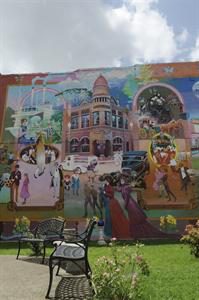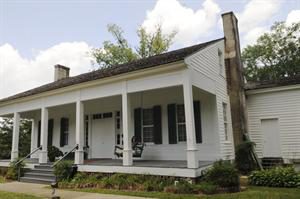The History of Camden

I was in Camden the other day and the visit got me thinking about the interesting slice of history this city holds. Whenever I visit a town, I try to find out as much about the area as I can. I feel I get so much more out of a visit (no matter where I go) knowing the backstory of a place. Below is a quick rundown of Camden in case you might feel the same. Enjoy!
First known as a French trading post called Ecore Fabre, its history has been closely tied to the Ouachita River and it was called the “Queen City” of the Ouachita during the steamboat era. In 1864, it became the unintended focus of the Red River Campaign, a major Civil War effort resulting in several significant battles.
Ecore Fabre ( Fabre’s Bluff) was named after a Frenchman who first settled the land. In 1824 John Nunn moved to the site and became one of the town’s early permanent settlers. Steamboats arrived at the settlement in the 1820s, linking it to commercial markets in New Orleans and helping the settlement grow.
In 1842, Ouachita County, named for the river, was formed from the northwest portion of Union
County. Ecore Fabre was chosen as the county seat, and its name was changed to Camden at the suggestion of one of the commissioners.
During the 1850s, Camden served as the supply center for several counties. As a steamboat river
port, it had the accommodations and transportation to service trade to New Orleans. By 1860, with a population of over 2,000, Camden had newspapers, churches, schools, merchants, lawyers, and manufacturers.
During the Civil War, Camden was the focus of the Red River Campaign of 1864. It and south Arkansas remained in Confederate hands until the end of the war. After the Civil War, cotton production remained important and steamboats continued to navigate the river. In the 1880s, the Iron Mountain and the Cotton Belt Route railroad lines were opened. Trains opened up markets for pine and hardwood forests in the county. Though they were challenged by the railroads, the steamboats continued to service the city until the 1930s.
Oil was discovered in the 1920s ,bringing much change to the area. An International Paper Mill was also constructed in the late 1920s. Camark Pottery also opened for business at this time and operated until the 1960s, producing pottery that is still prized. In 1939, Benjamin Tyndle Fooks developed a new grape drink named Grapette at his Camden bottling plant that became a top-selling brand.

Attractions in town include the McCollum-Chidester House, which served as a Union headquarters when federal troops occupied the town during the Red River Campaign. It was featured in the t.v. series North and South. Open for tours, the house still contains 1860s furnishings. About 10 miles to the northwest, the site of the Battle of Poison Springs is preserved at Poison Spring State Park, one of three state parks commemorating the campaign. Oakland Cemetery, which is on the National Register of Historic Places, is the largest Confederate cemetery in the area. Artifacts related to two famous Camden products, Camark pottery and Grapette soft drinks, as well as Civil War and railroad relics, are exhibited at the Camden Visitors Center and Museum. Two major events held in the city are the Camden Daffodil Festival and the autumn BPW Barn Sale.